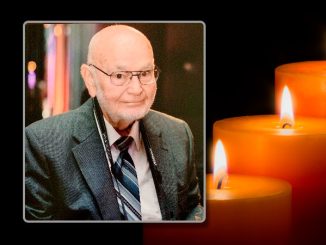
Residents encouraged to take precautions in outbreak
A growing number of people are coming to St. Charles Parish Hospital’s emergency room with the flu in an unusually early outbreak that is statewide and making Louisiana one of the hot spots nationally for the virus.
“We are seeing more widespread activity earlier in the season,” said Dr. Victoria Smith, associate medical director with the hospital and Primary Care – River Region. “The percentage of respiratory specimens testing positive for influenza in clinical laboratories is increasing.”
The majority of the hospital’s 10 patients diagnosed with the flu since October had the Type A virus, which is the most frequently identified strain reported by public health laboratories in the U.S.
But Smith said the number of patients is rising.
“I am not sure why we are seeing widespread activity in Louisiana,” she said. “I expect that the other states will catch up.”
Dr. Frank Welch, immunization medical director with the Louisiana Department of Health and Hospitals (LDHH), said the state, as well as St. Charles Parish, is averaging one of every 20 visits to doctors and hospitals involving the flu.
Welch agreed the early outbreak was unexpected, which is usually comes in February or early March.
He added, “I’ve done this for about 25 years, but to see these two states at widespread levels with the flu is really unusual.”
Welch said the outbreak will likely spread as people congregate indoors for the holidays.
The Centers for Disease Control and Prevention (CDC) also reports Louisiana and Mississippi are experiencing high flu rates nationally.
“I can’t remember a season where Louisiana led the nation in flu activity,” Welch said. “It typically starts in the big northern cities and then spreads to the rest of the country.”
Smith and Welch recommend taking precautions to lessen the spread of the flu, as well as contracting it.
Despite news out of Australia that the flu shot was only 10 percent effective against the H3N2 virus, Smith recommended taking it because it generates antibodies that help resist or lessen symptoms.
“It’s important to remember that the flu vaccine contains three or four flu viruses (depending on the type of vaccine you receive),” she said. “Even when there is a less-than-ideal match or lower effectiveness against one virus, the flu vaccine may protect against the other flu viruses.”
Welch added the inoculation can have four strains of the flu, including the H3N2 strain that was dominant in Australia this year, and can help build resistance to the virus.
Smith added high-risk people include children under age 5, adults 65 and older, pregnant women, residents of nursing homes and long-term care facilities, and people with medical conditions like asthma, chronic lung disease, heart disease, blood disorders, endocrine disorders such as diabetes, and weakened immune system due to disease or medication such as HIV or AIDS or cancer, and people under 19 on chronic aspirin therapy, and people with extreme obesity (BMI of 40 or more).
In Louisiana, only an estimated 30 percent of the flu cases are the same kind as in Australia, making it equally important to take the shot, Welch added.
While it is too early to offer an outlook on the severity of this outbreak, Smith and Welch advised taking preventive strategies such as covering a cough, staying away from sick people and washing hands.
On lessening the outbreak, Smith recommended avoiding close contact with people who are sick, sick people should stay home, cover the mouth and nose with a tissue when coughing or sneezing and wash hands to lower exposure to germs.
“The flu is a highly contagious disease,” Welch said. “Stay home if you have a temperature until 24 hours after your last temperature.”
To lessen or ease flu symptoms, Smith advised taking antiviral drugs.
Welch said the difference between a cold and the flu is simple – “It really comes on like a freight train.”
Within 24 hours of showing flu symptoms, he also recommended calling a doctor and arranging for medication like Tamiflu.
Welch also advised having someone pick up the medication to avoid exposing others to the virus.
According to Smith, flu symptoms include fever or feeling feverish, a cough, sore throat, runny or stuffy nose, muscle or body aches, headaches, fatigue and some people may have vomiting or diarrhea, though this is more common in children than adults.




Be the first to comment